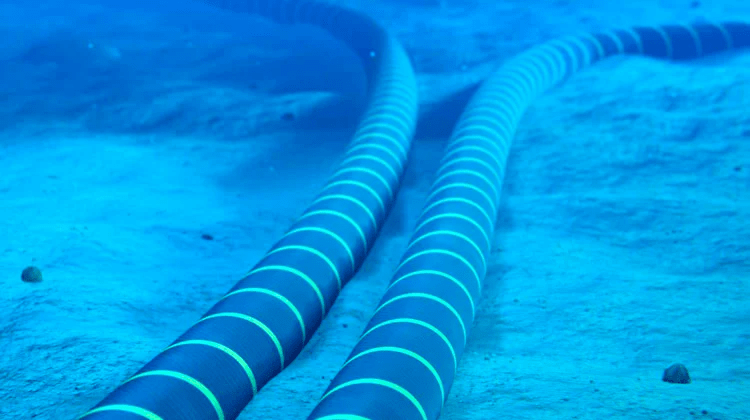Using Undersea Cables to Detect Seismic Events

A team of researchers with the National Physical Laboratory and the University of Edinburgh, Google and Istituto Nazionale di Ricerca Metrologica developed a way to use existing undersea fiber cables to detect seismic events. In their paper published in the journal Science, the group describes their test project involving a cable spanning the Atlantic Ocean.
Scientists have known that cables can be used to detect seismic activity. Work was done as far back as the 1960s to find out if they could be used to detect submarines or undersea earthquakes.
More recently, scientists have looked into the possibility of using distributed acoustic sensing as a way to detect seismic activity. Light pulses are sent across a cable and sensors listen for any that are bounced back due to tremors. Three years ago, a team installed a cable in Monterey Bay in California to test the idea.
Another team from Caltech working with Google demonstrated the use of polarization in regular undersea telecommunications cables. In this new effort, the researchers extended the idea of using undersea cables by taking advantage of a feature of the repeaters used on such cables.
Repeaters are used to send signals great distances across the ocean floor. They listen to the signal, amplify it, and pass it along. To assist with maintaining operations, repeaters have hardware to send signals in reverse. This helps to isolate problems. The researchers in this new effort utilized this feature for testing the use of existing cables as underwater seismic sensors. They sent light through a cable that connects the U.K. to Canada and then studied the signals sent back by the repeaters.
They found that they were not only able to see seismic activity, they were also able to locate it to points between repeaters. The researchers were able to detect a small earthquake with an origin near Peru and another near Indonesia. They found the cable so sensitive that they were even able to make out noise from moving ocean currents.
The researchers suggest more work is needed to ascertain whether such a system could also provide estimates of the magnitude of undersea quakes. Also, more analysis of signals is required to learn more about the differences between events that pose a danger and those that do not.
